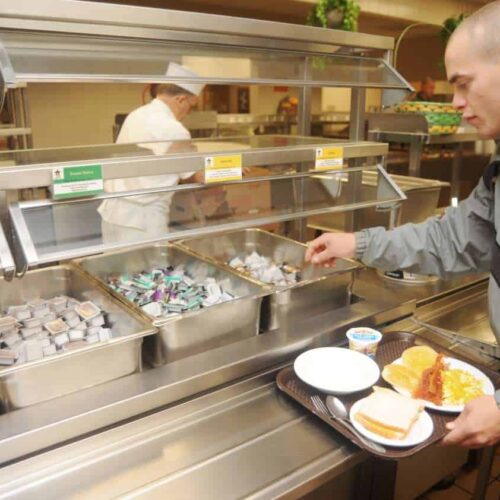Introduction
Shrimp scampi and chicken marsala are now on the menu at several U.S. Air Force bases. Despite the delicious additions to the usual mess hall fare, the effectiveness of the Air Force’s Food Transformation Initiative (FTI) is still up in the air.
The $19.3 million pilot initiative, launched in 2010, is designed to improve the quality, variety and availability of food at Air Force bases, as well as improve dining facilities and the sense of community among servicemen—all while cutting costs.
Food service giant Aramark has a $10.3 million contract as part of the change. It added pizza stations, better salad bar choices, and more fresh vegetables at the pilot bases.
While it is too early to determine cost savings from the FTI, the actual savings may be less than the 30 percent the Air Force originally estimated, according to a Government Accountability office report. The Air Force overestimated the number of hours servicemen could provide as cooks and food preparers and underestimated how many contract workers it would need.
Some workers who had previously been contracted to prepare food at Air Force bases lost their jobs as a result of the initiative, and others reported being overworked. Aramark also billed the Air Force $1 million in extra contractor labor costs for the first half of 2011 than the Air Force expected.
Though servicemen generally expressed satisfaction with the choice of food items, a key aspect of the FTI program has been delayed: The “campus” dining concept, which would allow servicemen to use their meal cards to eat at on-base dining facilities besides the main dining hall, has been put on hold three times since January.
The campus dining concept was launched at Patrick Air Force Base and MacDill Air Force Base July 5 and is expected to be launched at four other pilot bases later in the summer.
At the time the GAO audit was conducted, evaluation tools for five of the program’s eight goals were not in place. The Air Force had designed evaluation standards for three of the program goals, but the audit found these to be insufficient. For example, the Air Force planned to use its annual customer satisfaction survey to determine if the FTI had enhanced food quality, variety and availability, but received only a 17 percent response rate—too low to be statistically significant.
The Air Force has since taken steps to improve its methods of evaluation.
“There are currently measurable metrics for seven of the eight Air Force objectives, and work continues on the development of measureable data for the eighth objective, ‘providing a sense of community,’” the Department of Defense (DoD) wrote in response to the GAO report.
The DoD agreed with all GAO recommendations and is addressing them.


Join the conversation
Show Comments